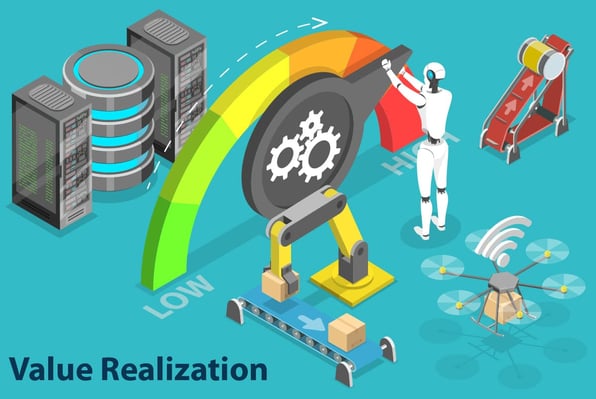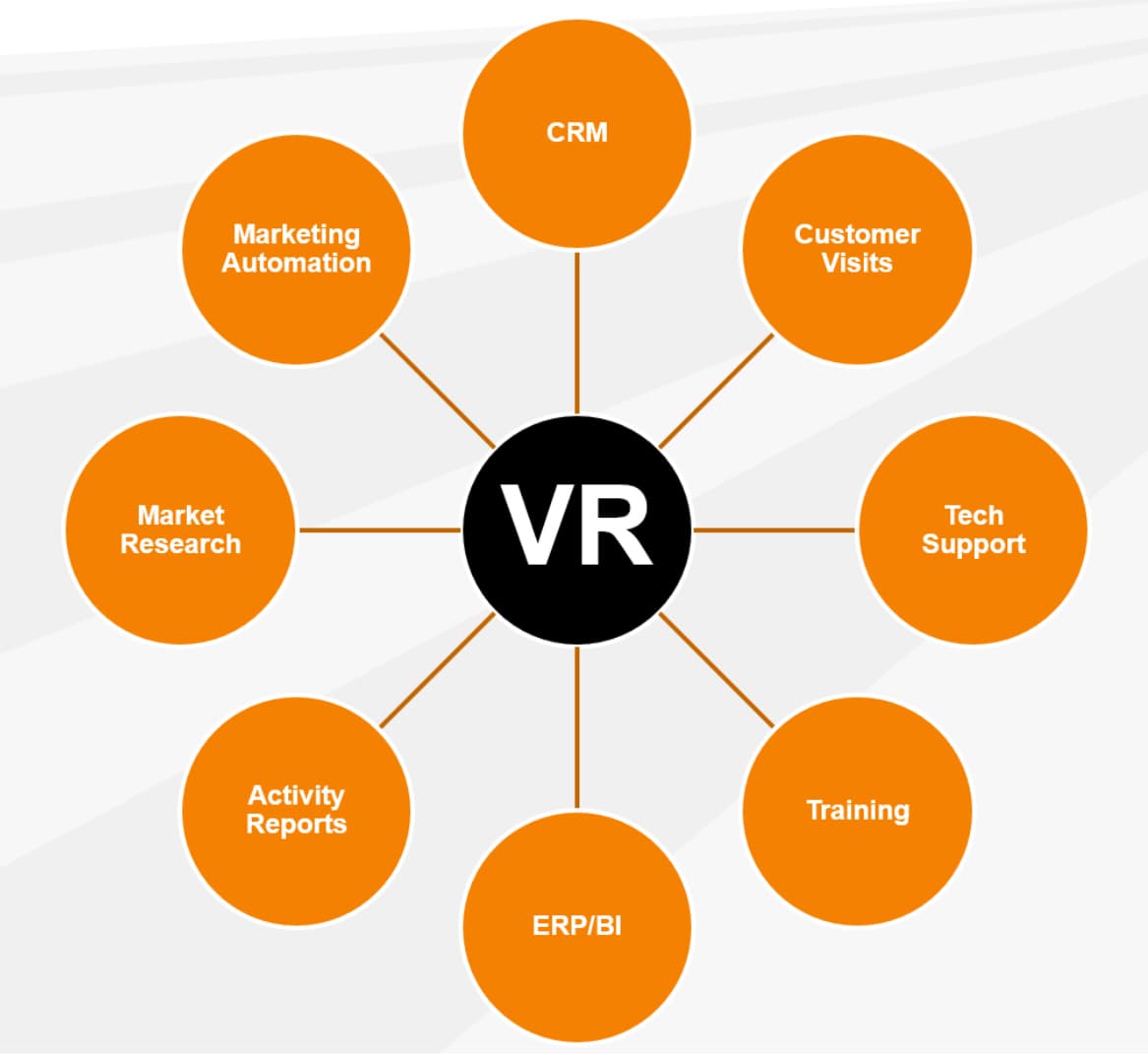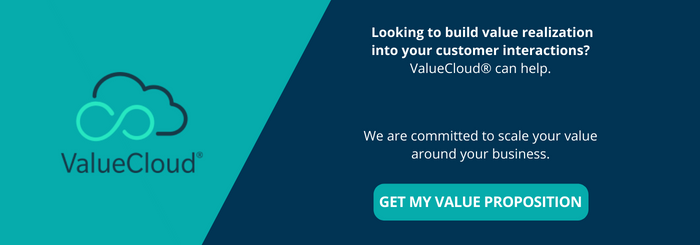Value Realization: Data is the Fuel of Automation

A customer value model is the heart of the customer value management process. It is a quantified customer value proposition that lists and quantifies all the great things you bring to the table. It expresses a clear statement of your competitive advantage focusing on product, service, and software.
But in today’s subscription economy, in order to track and measure all the things you do for the customers and to package that in a form of a Customer Value File, a Value Tracker, a Value Realization Brief, or any form of value reporting, you will need to extract the data from various sources.
The visual below shows the extent of the work of your marketing, sales, and customer success teams to get the relevant data. It is a hard and tenuous amount of work as indicated in the previous blog, Value Realization: Making the Shift from Manual to Automated, but the payoff it brings to your business is unparalleled.

Without even being fully aware, your organization most likely has customer value insight located across your organization in various systems, employees’ hard drives, people’s heads, and paperwork in the filing cabinet.
Personally, I have built incredibly detailed Customer Value Files in my previous lives, and it is time consuming. But, the outcome is enormously powerful. The extent of the manual work makes it impossible to provide a customer model for all of your customers. So, we had to prioritize strategic distributors and end-users only.
The good news today is that with a formal and automated value realization engine, you can accelerate the extraction and calculations of customer value across multiple sources. There might still be a few manual steps, but the vast majority of the work is done automatically. The customer success team is the chief conductor of all the critical activities in the value realization plan. They will use all relevant systems to connect the dots and extract the right information.
Here are some of the steps and sources:
- Customer Value Management (CVM) platform estimates data based on projected growth: Your CVM platform is the single source of truth when it comes to tracking customer value outcomes. This is the most significant component of the value realization strategy.
- Customer Success Manager (CSM) estimates data: Other data might be needed to finalize the calculation or complement the value realization report. The CSM is in charge of this work. She compiles all data and makes sure the data set is complete in the customer value platform to publish the relevant reports.
- CSM interviews customers and gets their best guess data: Prior to quarterly business reviews, the CSM and the customers will have discussions on quarterly outcomes in order to be fully aligned. When the data is not readily available internally, you have to go outside and ask customers for input. This serves to get customers' skin in the game and to create alignment around the outcome.
- Customer has systems in place and customer provides CSM with actual data: This is part of the 10% manual work that needs to be done by CSMs. You might want customers to share some of the data so that you can upload that into the value realization engine.
- CSM has systems in place and through the integration into the CVM platform, that data is automatically populated into the platform: This is the ideal state. If you can connect your customer value platform to customer operational data in their systems, data is extracted automatically. You might think of service performance data, usage data, win/loss data, or product operational data.
Whether you are in SaaS, Cyberspace, Manufacturing, Healthcare, or other industries that have a subscription model, value realization reports bring documented proof to your customers that you are positively impacting their business operations. The key is to get to the right data.
While some of the work might be manually tracked and integrated into the final outcome report, the ideal stage is to have the work 90% automated so that customer success managers spend more time interacting with customers and less time doing clerical work.
A powerful value realization engine can make a significant difference to bring all your customers on board and accelerate their growth at scale.
In the next blog, we will discuss how value realizations will transform your Go-to-Market strategy and processes.
______
To further explore the impact of CVM platforms and Value Realization in customer success teams, read the IDC Report.
Bio

Dr. Stephan Liozu (www.stephanliozu.com) is the Founder of Value Innoruption Advisors (www.valueinnoruption.com), a consulting boutique specializing in industrial pricing, digital business, and value models, and value-based pricing. Stephan has 30 years of experience in the industrial and manufacturing sectors with companies like Owens Corning, Saint-Gobain, Freudenberg, and Thales. He holds a Ph.D. In Management from Case Western Reserve University, and has written several books, including Dollarizing Differentiation Value (2016) and Value Mindset (2017).

 ValueCloud
ValueCloud
.png?width=118&height=76&name=Rectangle%20(3).png) ValueCloud Ignite
ValueCloud Ignite
.png?width=92&height=92&name=Rectangle%20(4).png) Free Assessment
Free Assessment
.png?width=100&height=100&name=Rectangle%20(5).png) Watch a Demo
Watch a Demo
.png?width=82&height=96&name=Rectangle%20(6).png) Value Calculator
Value Calculator

.png?width=62&height=51&name=Group%2010%20(1).png) Marketing
Marketing
 Sales
Sales
 Customer Success
Customer Success
 Engage Prospects
Engage Prospects
 Win Deals Faster
Win Deals Faster
 Retain Customers
Retain Customers
.png?width=62&height=62&name=Rectangle%20(8).png) Adopt and Scale
Adopt and Scale
.png?width=54&height=54&name=Rectangle%20(9).png) Cybersecurity
Cybersecurity
 Healthcare
Healthcare
.png?width=54&height=54&name=Rectangle%20(10).png) IT & Software
IT & Software




